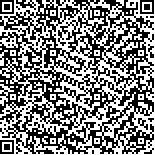本文已被:浏览 4259次 下载 4307次
投稿时间:2022-03-08
投稿时间:2022-03-08
中文摘要: 信息社会的飞速发展对信息存储、加工、传输能力提出了与日俱增的迫切需求。随着“摩尔定律”逐渐逼近极限,半导体工业急需寻求新的解决方案。二维材料因为原子级厚度的尺寸特点,表面无悬挂键的结构优势加上极大比表面积导致的对电、光等调控手段的敏感性被认为是“后摩尔定律”时代半导体工业新的突破口。松山湖材料实验室引进一批国内外顶级科学家,组建二维材料团队,以基础科研为根基,以工程应用为导向,重点攻关其中关键问题。其目标在于取得有世界级重大影响力的科研成果,布局我国二维材料产业。
Abstract:The rapid development of the information society puts forward an ever-increasing urgent need for information storage, processing, and transmission capabilities. With the ending of Moore's Law, the semiconductor industry urgently needs to find new solutions. Lowdimensional materials are considered to be a new breakthrough in the semiconductor industry in the post-Moore era, because of the size characteristics of atomic-level thickness, the structural advantage of no dangling bonds on the surface, and the sensitivity to electrical and optical control methods caused by a large specific surface area. Songshan Lake Materials Laboratory has introduced a group of top scientists and established a low-dimensional materials team. The research of the team, based on basic science and guided by engineering applications, focuses on tackling key issues. The goal is to achieve world-class influential scientific research results, and to deploy China low-dimensional materials industry.
keywords: low-dimensional materials electronic devices flexible devices spintronics optical electronics energy
文章编号: 中图分类号: 文献标志码:
基金项目:国家重点研发计划(2020YFA0309600),国家自然科学基金青年科学基金项目(12104330),广东省重点领域研发计划(2020B0101340001),松山湖材料实验室开放课题(2021SLABFN02)
引用文本:
张广宇,龙根,林生晃,冼乐德,姜岩,吴昊,王硕培,李娜.二维材料:从基础到应用[J].中国科学院院刊,2022,37(3):368-374.
ZHANG Guangyu,LONG Gen,LIN Shenghuang,XIAN Lede,JIANG Yan,WU Hao,WANG Shuopei,LI Na.Two-dimensional Materials: From Fundamental to Application[J].Bulletin of Chinese Academy of Sciences,2022,37(3):368-374.
张广宇,龙根,林生晃,冼乐德,姜岩,吴昊,王硕培,李娜.二维材料:从基础到应用[J].中国科学院院刊,2022,37(3):368-374.
ZHANG Guangyu,LONG Gen,LIN Shenghuang,XIAN Lede,JIANG Yan,WU Hao,WANG Shuopei,LI Na.Two-dimensional Materials: From Fundamental to Application[J].Bulletin of Chinese Academy of Sciences,2022,37(3):368-374.


